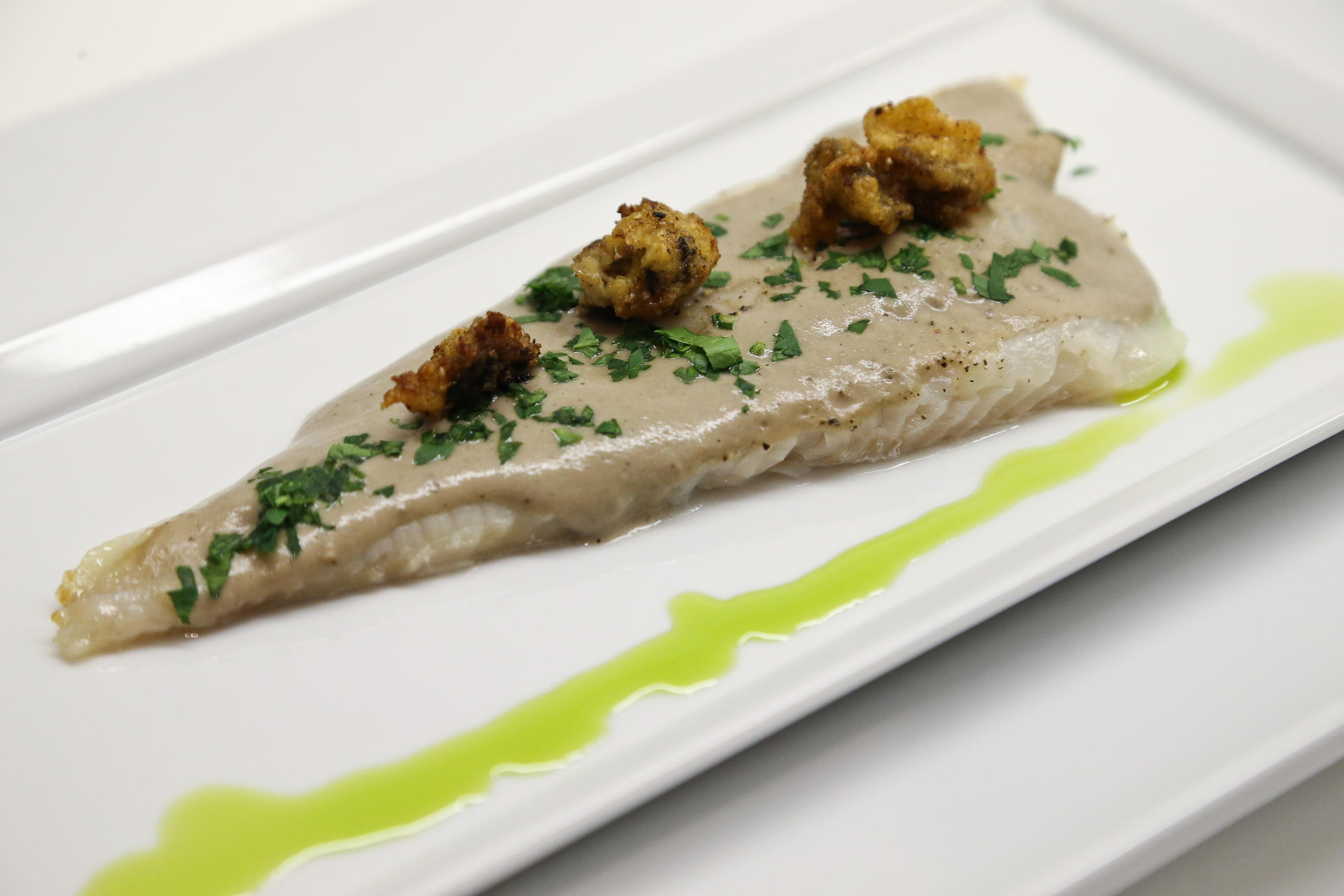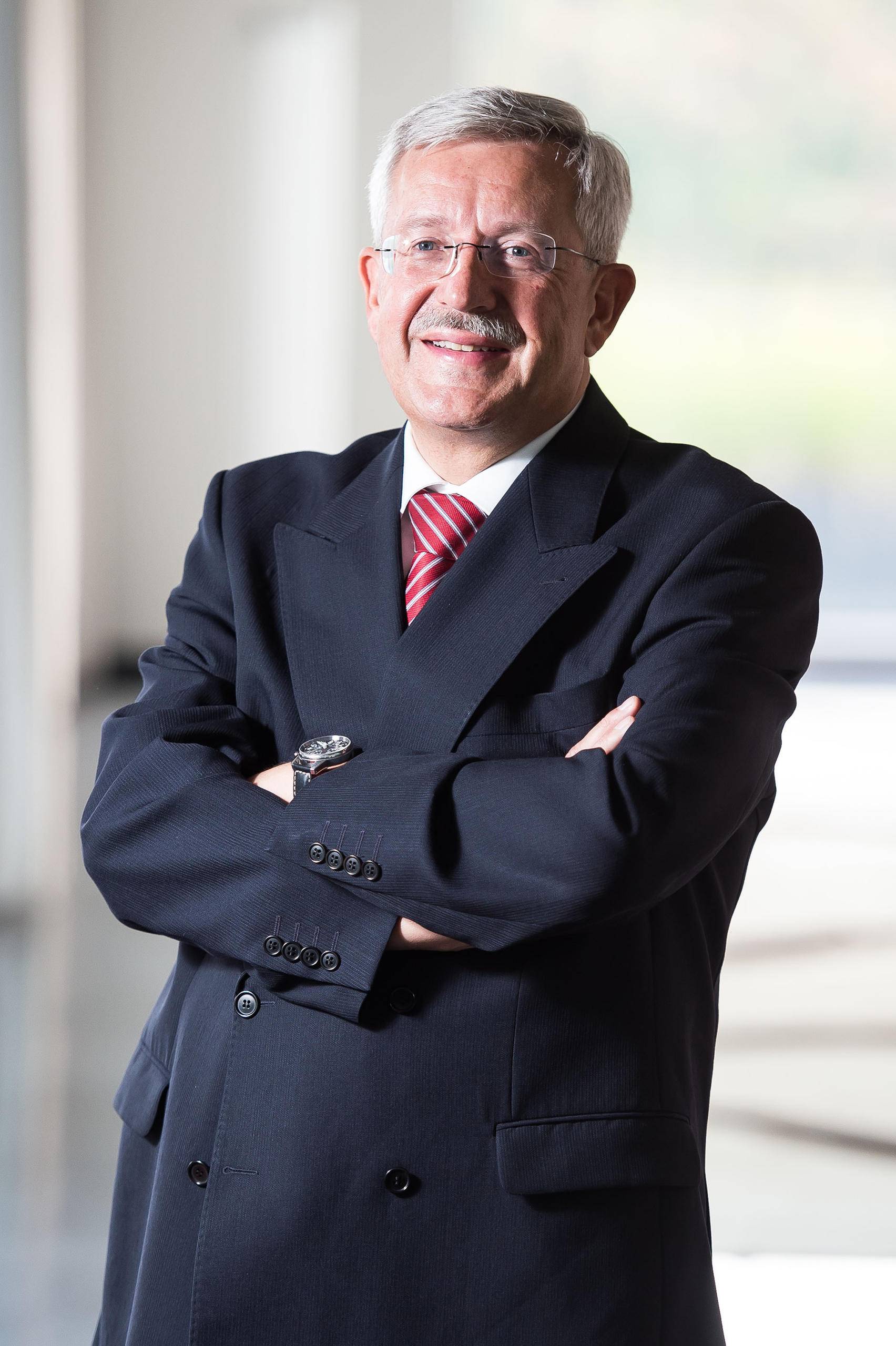
Swiss Ambassador has Washington simmering

William Tell soup, anyone? Or General Ulysses S. Grant pudding? What led Switzerland’s man in Washington to add some spice to his role as ambassador and write a cookbook?
“Before going to the United States I was thinking how I can best present Switzerland in culinary terms,” explained Martin Dahinden, on a recent visit to swissinfo.ch’s Zurich office.
Schweizer Küchengeheimnisse: Gesichter und Geschichten hinter bekannten Gerichten (Swiss Kitchen Secrets Faces and Stories Behind Famous Dishes), was published in German in July.
The AmbassadorExternal link, who took up his role in 2014, said he was convinced there was more to tell than the usual chocolate, cheese and fondue.
The book is a fascinating mixture of recipes – tested on his embassy guests – and history, spiced with anecdotes by a diplomat who is clearly passionate about Swiss food.
How did a busy ambassador find the time to write the book? “I’ve always had an interest in culinary issues and I already had a collection of recipes before I started,” admitted Dahinden. “So I could put the book together in a fairly small amount of time.”
Testing and timing
Recipe testing was incorporated into lunches and dinners at the Swiss Embassy in Washington DCExternal link, with Dahinden and his embassy chef working together to devise menus. “Some of the guests were – I shouldn’t say the guinea pigs – but the lucky people who got to test the dishes,” said Dahinden, with a smile.

Some dishes were easy to concoct, but older recipes often only include a description, rather than ingredients and preparation methods. It was the Swiss Renaissance cook Maestro Martino who introduced timing into recipes.
“It’s fascinating that it was a man from Switzerland, known for its watch industry, who did this,” said Dahinden.
Not that there were any clocks or watches during the time of the Maestro, who cooked for two Popes during his career. So recipes were timed according to how many Pater Noster were said.
Unsung heroes
The Ambassador has found quite a few Swiss who have made their culinary mark in history: there was Napoleon’s chef, Dunand, who created Poulet Marengo, (one of Dahinden’s favorite recipes from the book) and the Delmonicos, a family from Italian-speaking Ticino, whose restaurant changed dining habits in 19th century New York. Most Americans are familiar with the Delmonico steak dish.

Swiss chef Henry Haller cooked for five US presidents, from Johnson to Reagan, deftly combining Swiss dishes with the tastes of different first families.
Yet many of these pioneers remain unsung, for reasons that baffle Dahinden. “This is one of the reasons I thought it would be good to call the book Kitchen Secrets,” he said.
They often displayed typical Swiss skills of precision and organisation, sometimes even to the point of obsession. This is reflected in the sad story of Louis XIV’s Swiss chef, François Vatel, said to have killed himself in shame after an order of fresh fish did not turn up on time for court festivities.
Cuisine and diplomacy
There is, however, no Swiss national cuisine, like in France or Italy. This is because Switzerland did not have a royal court, like Versailles with its special food style and service, said Dahinden. There are instead a lot of regional cuisines with links to neighbouring countries.
That being said, Swiss dishes still make excellent culinary diplomacy, as Dahinden “likes to make dishes that can be a starting point for discussion”. For example, in the 19th century Switzerland decided to mark its relationship with the US, at that time the only other republic, with a mural in its parliament building. An artist was sent to the US to paint leading political figures from the Civil War, but the mural was never actually realised.
The Swiss Embassy in Washington has the portraits of generals William T. ShermanExternal link and General Robert E. Lee External linkon display. Dahinden was excited to discover that the Delmonicos had named some of their dishes after these figures (for example, Fillet of Sole à la General Sherman). The embassy held an event to celebrate, with guests discussing not only what the US and Switzerland had in common in the 19th century, but what it means to be sister republics today, he recounted.

Another embassy delicacy – also from the Delmonicos – is named after the general and later 18th American president, Ulysses S. GrantExternal link. Originally a large pudding accompanied by a champagne, apricot jam and quince jelly sauce, a mini version of this dish is now served at tea, breakfast or for dessert, the book reveals.
William Tell soup
Prepare two purees: one of barley and one duck (canard royal). Mix together shortly before serving and finish with some fresh butter. Make small game dumplings (gibier au cornet) and add to the soup tureen along with the puree.
(Schweizer Küchengeheimnisse: Gesichter und Geschichten hinter bekannten Gerichten, Nagel & Kimche; translated by swissinfo.ch)
Heroes and staples
Recipes featuring such Swiss staples as chocolate and Bircher muesli also feature in the book, which Dahinden hopes will be translated into English and French.
Swiss icons also make an appearance. A “William Tell soup” is included despite being devised by a top 19th century Italian chef. It uses meat that would not have been available to ordinary people in Tell’s time. “A reference to Tell, who would not have refrained from putting this kind of meat in his soup,” said Dahinden.
Are there any apples in it, swissinfo.ch wanted to know? “No,” laughs the diplomat. “But you are right, most other William Tell dishes have apples, like cakes or sausages with apple sauce, because of this famous scene where Tell has to shoot the apple off his son’s head. Almost all the other dishes have apple, but not this one!”
Martin Dahinden
Dahinden was born in Zurich in 1955 and earned a Ph.D in economics from the University of Zurich. Before joining the diplomatic service he was a postgraduate assistant at the university, and worked in a bank and publishing house.
Dahinden was appointed by the Swiss Government as the Ambassador of Switzerland to the United States, taking office in 2014. Prior to that, he served as Director of the Swiss Agency for Development and Cooperation (SDC) from 2008 to 2014 and headed the Directorate of Corporate Management of the Foreign Ministry from 2004 to 2008.
He has also has postings in Paris, Nigeria, New York and Brussels. He is married with two children.
The Swiss food he misses the most while in the US: Swiss cheeses and sausages. He is pleased that there is a good Swiss bakery in Washington DC.

In compliance with the JTI standards
More: SWI swissinfo.ch certified by the Journalism Trust Initiative



























You can find an overview of ongoing debates with our journalists here . Please join us!
If you want to start a conversation about a topic raised in this article or want to report factual errors, email us at english@swissinfo.ch.